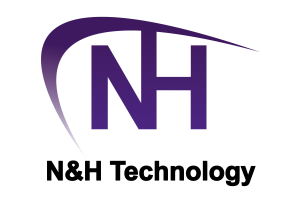Copernicus Project P2X
Carbon Dioxide-Neutral Fuels from Air and Electricity
As part of the Copernicus P2X project, which is funded by the German federal government, an integrated container-scale test facility has now been set up to produce fuels from carbon dioxide in the air and green electricity.
"Wind and sun provide us with sufficient energy worldwide, but not always at the right time," says Professor Roland Dittmeyer of KIT, describing the dilemma of the energy turnaround. Dittmeyer is coordinator of the research cluster "Hydrocarbons and long-chain alcohols" within the Copernicus project Power-to-X (P2X). "In addition, some important traffic segments such as air traffic or heavy goods vehicles also require fuels in the long term, as these have a high energy density. It would therefore make sense to store the previously unused green electricity in chemical energy sources.
The partners Climeworks, Ineratec, Sunfire and KIT have now combined the necessary chemical process steps in a compact plant, achieved coupled operation and thus demonstrated the functional principle. The technology combination promises optimum utilisation of the carbon dioxide used and the greatest possible energy efficiency, as the material and energy flows are recycled internally. The current pilot plant can produce around 10 litres of fuel per day. In the second phase of the Kopernikus P2X project, a plant with a capacity of 200 litres per day will soon be developed. After that, a pre-industrial demonstration plant in the megawatt range, i.e. with a production capacity of around 1,500 to 2,000 l per day, is to be built. This would theoretically make it possible to achieve efficiencies of around 60 percent, i.e. to store 60 percent of the green electricity used as chemical energy in the fuel.
In the first step, the plant extracts carbon dioxide from the ambient air in a cyclic process. The Direct Air Capture technology from Climeworks, a spin-off of ETH Zurich, uses a specially treated filter material for this purpose. Like a sponge, the filters through which the air flows absorb carbon dioxide molecules. Under vacuum and at 95 °C, the adhering carbon dioxide separates again from the surface and is pumped off.
In the second step, carbon dioxide and water vapour are split electrolytically at the same time. This so-called co-electrolysis by the technology company Sunfire produces hydrogen and carbon monoxide in a single process step, a synthesis gas that is the basis for a variety of processes in the chemical industry. Co-Electrolysis with a high degree of efficiency can chemically bind 80 percent of the green electricity used in the synthesis gas on an industrial scale.
In the third step, long chain hydrocarbon molecules are formed from the synthesis gas using the Fischer-Tropsch process, the raw products for fuels. Ineratec, a spin-off of KIT, is supplying a microstructured reactor that offers a large surface area in a very small space in order to reliably dissipate process heat and use it for other process steps. In this way, the process can be easily controlled, can withstand load changes well and is modularly expandable.
Finally, the fourth step optimizes fuel quality and yield. KIT has integrated this sub-process, known as hydrocracking, into the process chain. In a hydrogen atmosphere, the long hydrocarbon chains partially break down in the presence of a platinum zeolite catalyst, thus changing the product spectrum to more usable fuels such as gasoline, kerosene and diesel.
The process offers particularly great potential in terms of its modular character. Due to the low risk of scaling, the threshold for a realization is significantly lower than with a central, large chemical plant. The process can be installed decentrally and can therefore be used where solar, wind or water power is available.
A total of 18 research institutions, 27 industrial companies and three civil society organisations are involved in P2X. New technological developments are to be brought to industrial maturity within ten years. The first funding phase will focus on research into the entire value chain from electrical energy to material energy sources and products.





